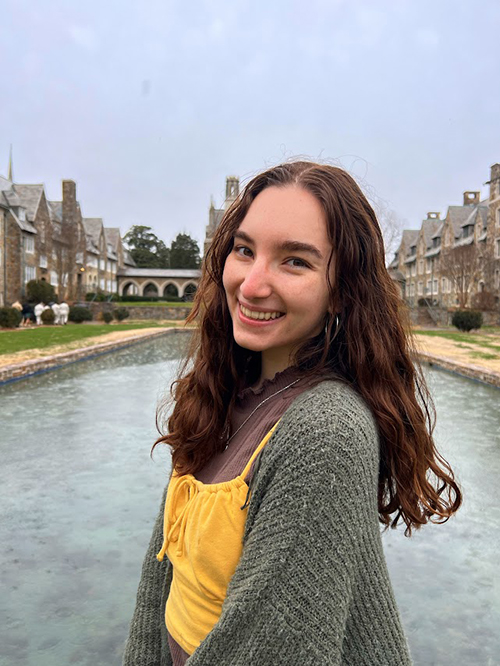by Hannah Buckelew
Biomedical Engineering student Emma Stevenson has been awarded a 10-week Biomedical Engineering Summer Internship from the National Institute of Health’s Institute of Biomedical Imaging and Bioengineering (NBIB) for her project titled, “Automation of radioactive cell labeling using microfluidic acoustophoresis.” The NBIB summer internship allows rising biomedical engineering students to participate in cutting-edge research projects under the mentorship of world-class scientists in NIH laboratories in Bethesda, Maryland, from June 5 to August 11, 2023.
Cell-based cancer therapies refer to new and promising approaches in which anti-cancer properties are extracted from the patient, expanded, and often genetically engineered to enhance cancer recognition properties for adoptive T-cell therapy, and reinjected back into the patient. Current tools and resources to monitor this process are limited.
An existing solution is a Zr-oxine cell relabeling method using centrifugation. This process enables patients to be scanned with positron emission tomography (PET)/computed tomography (CT) to ascertain the distribution of the reinfused labeled cells to determine the percentage of those travelling to the target tissue or organ. This technique is done manually and is time-consuming.
Stevenson, who completed her junior year this spring, is focused on using a new technique, acoustophoresis, that employs the laminar flow of cells to move from one channel to another and allow them to be labeled radioactively using 89Zr-Oxine. Acoustophoresis uses ultrasound technology to generate waves in a micro-channel to affect the movement of cells within a fluid, either by trapping and constraining their movement while the fluid flows through the channel or by moving cells between two different fluids flowing side by side along a micro-channel. Stevenson's study uses the latter application, in which cells are transferred from one solution to another, replacing the standard cell washing method using centrifugal cell washing in Zr-oxine radiolabeling.
“Replacing the use of centrifuge with an acoustophoresis cell washing chip is the first step in exploring the viability of acoustophoresis technology,” Stevenson says.
After testing a radiolabeling procedure which uses acoustophoresis cell washing against the current centrifuge method, Stevenson found that after measuring the labeling efficiency, specific activity, cell recovery, and labeled cell viability and activation function, using the acoustophoresis cell washing procedure had no detrimental effects on the radiolabeling process and validated the technology for use in an automated cell radiolabeling system. Stevenson will continue to study the use of acoustophoresis in pursuit of a more efficient cell washing method.
“I will be using this device to test the cell’s viability and efficiency throughout the process,” Stevenson says. “I am hoping to gain valuable research in the field of biomedical engineering this summer.”
Stevenson plans to pursue an M.D./Ph.D. in biomedical engineering to become a pediatric nephrologist.
